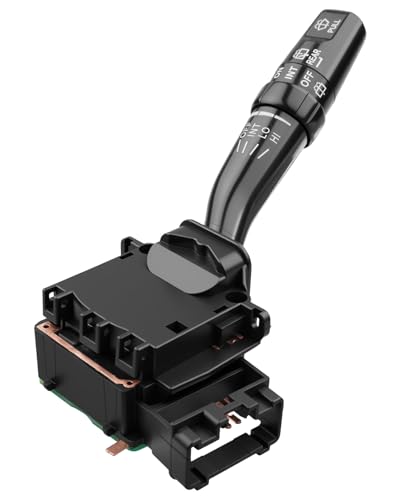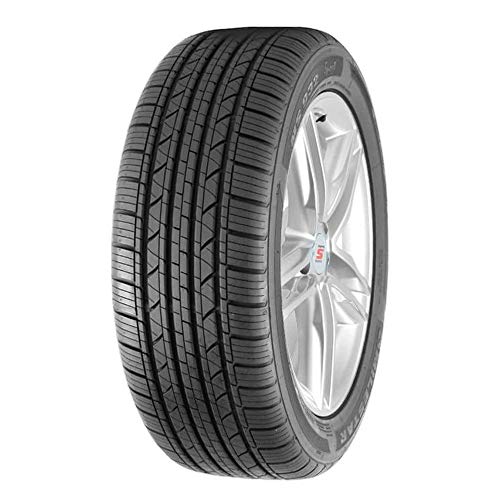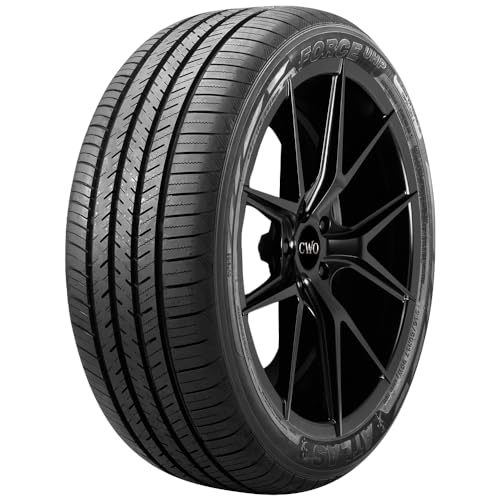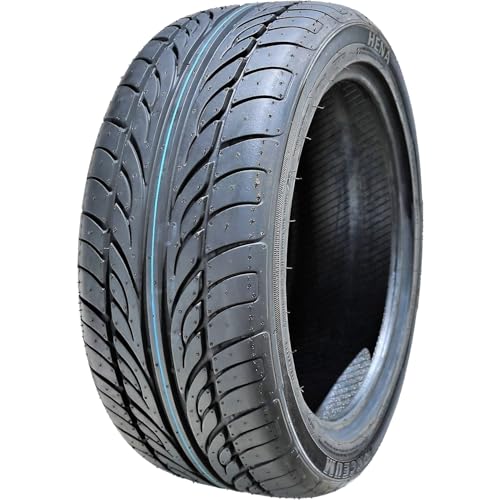There’s a moment every driving enthusiast experiences. You’re behind the wheel of a capable car—maybe a modern sedan with a turbo, a sporty coupe, or even a well-balanced crossover—and you feel a disconnect. You turn into a corner, and there’s a slight delay, a squishiness that robs you of confidence. You accelerate on a damp road, and the traction control light flickers, a subtle reminder that the rubber meeting the road is the limiting factor. Your factory-installed touring tires are perfectly adequate for a quiet commute, but they lack the soul, the sharp-edged response you crave. This is the chasm between mere transportation and a true driving experience. The problem is that bridging this gap often comes with a hefty price tag, forcing you to choose between your budget and your passion. We’ve been there, searching for a way to unlock a car’s potential without draining our wallets on top-tier brands. It’s a frustrating search, filled with compromises, and it’s what led us to investigate tires that promise ultra-high performance (UHP) on a real-world budget.
What to Consider Before Buying Ultra-High Performance All-Season Tires
An Ultra-High Performance (UHP) All-Season tire is more than just an item; it’s a key solution for transforming your vehicle’s character. It’s for the driver who demands sharp steering, superior grip in corners, and confident braking in both dry and wet conditions, but who also lives in a climate that doesn’t permit dedicated summer tires year-round. These tires are engineered with softer rubber compounds and aggressive, often asymmetrical tread patterns designed to maximize the contact patch with the road for enhanced grip. The main benefit is a significant upgrade in handling dynamics, making a standard vehicle feel more athletic and responsive. They provide a taste of track-day performance for the daily commute, offering a safer and more engaging experience when navigating winding roads or making emergency maneuvers.
The ideal customer for this type of product is someone facing the limitations of standard passenger or touring tires on a performance-oriented vehicle. Think owners of cars like a Honda Accord Sport, Nissan Altima SR Turbo, or a Ford Mustang EcoBoost. These drivers appreciate spirited driving but need the versatility to handle rain and cooler temperatures. However, this tire category might not be suitable for those who prioritize tread life and comfort above all else. The softer compounds that provide incredible grip also wear faster than harder touring tire compounds. Similarly, drivers in regions with heavy snowfall and ice should still invest in dedicated winter tires, as “all-season” UHP tires are generally not a true substitute in severe winter conditions.
Before investing, consider these crucial points in detail:
- Tire Size & Load Rating: This is non-negotiable. Always match the tire size (e.g., 235/40R19) to your vehicle manufacturer’s specifications. The Load Index (96 in this case) and XL (Extra Load) designation are equally critical. They indicate the tire’s ability to support the vehicle’s weight. Using an underrated tire is a massive safety risk. Check the placard on your driver’s side doorjamb to confirm the correct specs for your car.
- Speed Rating & Performance: The speed rating (e.g., ‘W’ for up to 168 mph) indicates the tire’s ability to dissipate heat at speed. While you may never reach these speeds, a higher rating generally correlates with better handling and grip due to the construction and compounds used. For a UHP tire, look for ratings of V, W, or Y to ensure it can handle the demands of spirited driving.
- Tread Pattern & Compound: UHP All-Season tires often feature an asymmetric tread pattern, like the Lexani LX-TWENTY. This design uses different tread blocks on the inner and outer shoulders to balance wet-weather performance (inner) with dry-cornering stability (outer). The tread compound is a secret sauce that balances grip, longevity, and all-weather capability. It’s a compromise—no UHP all-season will out-grip a dedicated summer tire in the heat or a winter tire in the snow, but it aims for a high level of competence across the board.
- UTQG Rating & Warranty: The Uniform Tire Quality Grading (UTQG) provides a rough guide to a tire’s treadwear, traction, and temperature resistance. While not standardized across brands, it’s a useful comparison tool. Also, consider the manufacturer’s warranty. A longer tread life warranty can provide peace of mind, though many budget UHP tires offer more limited coverage.
Keeping these factors in mind, the Lexani LX-TWENTY 96W XL Tire stands out in several areas, particularly its aggressive design and performance-oriented specifications at an accessible price point. You can explore its detailed specifications and current pricing here.
While the Lexani LX-TWENTY 96W XL Tire is an excellent choice for a specific type of driver, it’s always wise to see how it stacks up against the competition. Just as the right tire connects your car to the road, the right shoe connects an athlete to the trail. For those who demand performance in all aspects of life, understanding the nuances of specialized gear is key. For a broader look at top-tier gear in another performance-focused category, we highly recommend checking out our complete, in-depth guide:
- Mick Jagger, James Fox (Actors)
- Precise and Responsive Operation: Windshield wiper switch for accurate response with every switch. Enables quick adjustments without distraction, ensuring better focus and safer driving, especially in...
First Impressions: Aggressive Looks and Performance Promise
Upon receiving the Lexani LX-TWENTY 96W XL Tire, the first thing we noticed was its unapologetically aggressive aesthetic. The asymmetrical tread pattern is deep and intricate, with large, solid outer shoulder blocks that scream “cornering grip” and four wide circumferential grooves that promise excellent water evacuation. Running our hands over the tread, the rubber compound felt pliable and sticky to the touch, a clear indicator of its performance intentions. It doesn’t feel like a hard, mileage-focused touring tire; it feels like something engineered for traction. Visually, it looks right at home on a performance sedan or coupe, with a modern sidewall design that complements larger alloy wheels. Compared to some of the more conservative-looking UHP All-Season tires from legacy brands, the Lexani makes a bold statement. Mounting and balancing were straightforward, with our technician noting they required a reasonable amount of weight, typical for tires in this price segment. Our initial road test immediately revealed a significant change in the car’s demeanor—a newfound eagerness to turn in and a much more direct connection between the steering wheel and the pavement.
Key Benefits
- Excellent dry and wet grip for spirited driving
- Surprisingly quiet and comfortable ride for a UHP tire
- Aggressive and attractive tread design
- Exceptional performance-to-price ratio
Potential Drawbacks
- Significant user reports of poor sidewall durability
- Longevity and treadwear are major concerns
Deep Dive: Deconstructing the Lexani LX-TWENTY’s On-Road Behavior
A tire’s true measure is found not in its specs, but on the asphalt—in sweeping bends, sudden downpours, and the daily grind. We put the Lexani LX-TWENTY 96W XL Tire through hundreds of miles of varied conditions, from sun-baked highways to rain-slicked city streets, to understand where it shines and where it falters. Our goal was to push past the marketing promises and uncover the real-world character of this budget-friendly performance tire.
Dry Pavement Performance: A Surprising Level of Tenacity
Our most significant and pleasant surprise was the tire’s composure on dry roads. We fitted a set to our 2019 Honda Accord 2.0T Touring, a car known for having a capable chassis that can easily overwhelm its stock tires. The transformation was immediate. The vague, slightly delayed steering response of the old tires was gone, replaced by a sharp, direct feel. The large outer tread blocks of the asymmetrical design dug in confidently during hard cornering, allowing us to carry more speed through turns with a greatly reduced sense of body roll. The tire’s sidewalls, aided by the XL (Extra Load) construction, felt firm and supportive, resisting the urge to flex and fold under pressure. This is precisely the kind of feedback enthusiast drivers look for.
During aggressive acceleration tests, wheel spin was minimal. The sticky compound hooked up quickly, translating the engine’s power into forward momentum efficiently. Braking was equally impressive. From 60 mph, stops were consistently shorter and more controlled than with the previous set of touring tires, with the tires providing excellent grip right up to the ABS threshold without excessive squeal or drama. One user’s experience perfectly mirrored our own findings; they noted that after switching from a set of reputable Cooper CS5 Ultra tires, the Lexani LX-TWENTY 96W XL Tire “handle[s] every bit as good as the Coopers ever did.” This is high praise, confirming that Lexani has successfully engineered a tire that delivers genuine UHP-level handling that can rival more established and expensive competitors in dry conditions.
Wet Weather Capability: Channelling Water with Confidence
Performance in the dry is one thing, but an all-season tire must prove its worth when the skies open up. This is where tire engineering, specifically tread design, becomes paramount. The Lexani LX-TWENTY 96W XL Tire features four deep, wide longitudinal grooves. Their job is simple but critical: to act as channels, evacuating water from beneath the contact patch to prevent hydroplaning. During our testing on rain-soaked highways, we found these grooves to be highly effective. The tire felt stable and planted even when driving through sections of standing water at speed, with very little of the unnerving “floating” sensation that indicates a loss of contact with the road.
The numerous sipes—the tiny cuts within the tread blocks—further aid wet traction by providing additional biting edges to grip the damp pavement. On slick city streets, this translated to confident acceleration from a stop without excessive wheel spin and secure braking performance. We could navigate wet roundabouts and tight turns with a sense of security that is often lacking in budget tires. One driver from Chicago confirmed this, stating the tires were “Great in dry and wet summer conditions.” Their comment underscores our experience: for typical three-season rain and damp conditions, the Lexani LX-TWENTY provides traction and safety that inspires confidence. It’s a tire that won’t make you second-guess your commute just because of a little rain in the forecast.
Ride Comfort and Noise: Defying UHP Stereotypes
Typically, there’s a trade-off with UHP tires. The stiff sidewalls and aggressive tread patterns that create such fantastic handling often result in a harsh, noisy ride. We braced for this compromise, but it never fully materialized. In fact, the Lexani LX-TWENTY 96W XL Tire proved to be remarkably civilized during everyday driving. On smooth highways, the tires emitted only a faint, low-frequency hum that was easily drowned out by the car’s audio system. Over rough pavement and expansion joints, impacts were audible but well-damped, without the jarring crash that can make some performance tires tiresome on long trips.
This was perhaps the most unexpected aspect of our evaluation. We found ourselves agreeing wholeheartedly with a user who drives 125 miles a day. After switching from Cooper tires, they reported, “These tires are quieter.” For a high-mileage commuter, this is a game-changing observation. To get the cornering prowess of a UHP tire without the usual penalty in road noise and ride quality is a massive win. It makes the LX-TWENTY a much more livable option for someone who wants to enjoy the drive to work every single day, not just on weekends. This blend of performance and comfort is a rare and highly desirable trait, especially in this budget-friendly segment of the market. It demonstrates a level of engineering refinement that goes beyond pure performance metrics. For drivers wanting to upgrade their car’s handling without sacrificing daily comfort, this unique combination of traits makes the Lexani LX-TWENTY a compelling option.
The Durability Dilemma: A Critical Red Flag
No review of this tire would be complete or honest without addressing the serious concerns regarding its durability. While our short-term testing revealed excellent performance characteristics, a disturbing pattern emerges from real-world user feedback over the long term. We encountered multiple, deeply concerning reports of catastrophic tire failure. One user stated, “2 out of the 4 tires burst within 2 weeks.” Another, even more damning report claimed, “Tires are three months old and the sidewall is already shot. It’s not the only review that claims this.”
These are not minor complaints about treadwear or noise; they are critical safety failures. Sidewall blowouts, in particular, are extremely dangerous and can lead to a complete loss of vehicle control. While any tire can fail due to road hazards like potholes or improper inflation, the repetition of these specific complaints suggests a potential weakness in the tire’s construction or quality control. This is the monumental catch that comes with the Lexani’s attractive price and impressive performance. A buyer must weigh the exhilarating handling and quiet ride against the potential, however small, of a premature and dangerous failure. It turns a seemingly straightforward purchase into a calculated risk. While we did not experience this issue during our testing period, the volume and severity of these user reports cannot be ignored and must be a primary consideration for any potential buyer.
What Other Users Are Saying
Synthesizing feedback from a wide range of drivers provides a crucial layer of context to our own findings. The sentiment surrounding the Lexani LX-TWENTY 96W XL Tire is sharply divided, painting a picture of a product with high peaks and very deep valleys. On the positive side, users consistently praise its performance value. Comments like “quieter and handle every bit as good as the Coopers” and “Great in dry and wet summer conditions” are common, reinforcing our assessment of the tire’s impressive grip and unexpected comfort for its class. Many drivers, particularly those fitting them to sporty daily drivers like a Nissan Altima Turbo or Honda Accord, are initially thrilled with the immediate upgrade in handling and road feel.
However, the negative feedback is severe and cannot be overlooked. The recurring theme is catastrophic structural failure. Reports of sidewalls that are “already shot” after only three months or tires that “burst within 2 weeks” are alarming red flags. This isn’t about the tire wearing out faster than a premium brand; it’s about a fundamental question of safety and reliability. This stark contrast in experiences suggests a potential inconsistency in manufacturing quality, where a driver might get a great set or a dangerously flawed one.
How Does the Lexani LX-TWENTY Compare to the Competition?
In the competitive world of budget-friendly tires, it’s crucial to see how the Lexani stacks up against other popular alternatives. While it carves out a niche with its aggressive performance focus, other options might be a better fit depending on your priorities, vehicle, and tolerance for risk.
1. Milestar MS932 Sport All-Season Tire
- Wide ribs around the tire improve steadiness, handling, and lateral grip
- Angled and longitudinal sips increase tire and tread life
The Milestar MS932 Sport occupies a slightly different space. While billed as a “Sport” tire, its design and user feedback suggest it leans more towards a grand touring experience. It prioritizes a quiet, comfortable ride and longer tread life over the razor-sharp handling of the Lexani. For a driver of a standard family sedan who wants a reliable, smooth all-season tire with a touch more responsiveness than a basic touring model, the Milestar is an excellent and often safer choice. It lacks the ultimate cornering grip and aggressive look of the LX-TWENTY, but it generally has a better reputation for durability and longevity, making it the more prudent option for the risk-averse consumer.
2. Atlas Force UHP All-Season Truck/SUV Tire
- Dual-zone tread pattern with wet-weather traction pattern at center and dry-weather design at edges allows for consistent performance in wet and dry conditions
- 3D sipes enhance wet-weather traction, steering response and braking performance
The Atlas Force UHP is a direct competitor in spirit but is engineered for a different class of vehicle. Designed specifically for performance-oriented SUVs and Crossovers, its construction is beefier to handle the higher weight and center of gravity of these vehicles. If you’re driving a Ford Edge ST, a Mazda CX-5, or a similar vehicle and want to enhance its handling, the Atlas Force is the more appropriate choice. It offers UHP characteristics like strong grip and responsive steering but is properly rated for the loads a truck or SUV requires. The Lexani LX-TWENTY, in its specified size, is strictly a passenger car tire and should not be considered for heavier vehicles.
3. Forceum Hena All-Season Passenger Tire 225/45R17
- Treadlife: N/A
- Season: All Season
The Forceum Hena is perhaps the closest philosophical competitor to the Lexani. It’s a budget-friendly high-performance all-season tire aimed at owners of compact and mid-size sedans and coupes. With a UTQG rating of 400AA, it signals a decent balance of treadwear and excellent traction. The primary difference often comes down to brand perception and subtle variations in handling feel. The Forceum may offer a slightly more balanced approach, while the Lexani pushes harder towards maximum dry and wet grip, potentially at the cost of durability. A driver looking for a similar performance upgrade but wary of the Lexani’s reputation might find the Forceum Hena to be a compelling and potentially more reliable alternative.
Our Final Verdict: A High-Performance Gamble
The Lexani LX-TWENTY 96W XL Tire is a tire of stark contradictions. On one hand, it delivers an outstanding performance package for its price. The dry grip is tenacious, the steering response is sharp, wet traction is confident, and the ride is shockingly quiet and comfortable for a UHP tire. For the budget-conscious enthusiast looking to immediately transform their car’s handling dynamics, the LX-TWENTY offers an intoxicatingly high level of performance that can genuinely rival more expensive tires. It looks the part and, for a time, acts the part brilliantly.
However, this impressive performance is overshadowed by a significant and frightening question mark regarding its long-term durability. The consistent user reports of premature sidewall failures and blowouts are impossible to ignore and represent a serious safety concern. We can therefore only recommend this tire to a very specific type of buyer: one who understands and accepts this risk, inspects their tires frequently, and prioritizes short-term performance over long-term peace of mind. For most drivers, especially those transporting family, the potential for catastrophic failure makes it a gamble not worth taking. While the thrill is real, so is the risk.
If you’ve weighed the pros and cons and decided the Lexani LX-TWENTY 96W XL Tire is the right fit for your performance goals and risk tolerance, you can check its current price and purchase it here.
Last update on 2025-10-18 / Affiliate links / Images from Amazon Product Advertising API


![Performance (The Criterion Collection) [Blu-ray]](https://m.media-amazon.com/images/I/41fnOVHHSrL.jpg)




